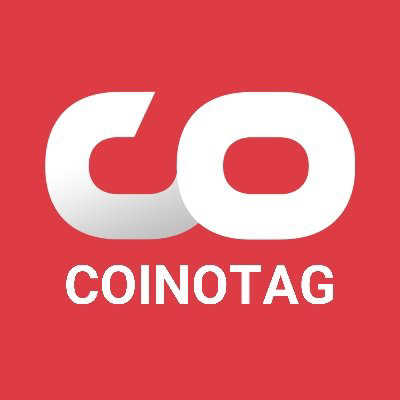
flow state narxiflow
UZS
O'zbekiston so'mi da flow state (flow) narxi -- UZS bo'ladi.
Ushbu tanganing narxi yangilanmagan yoki yangilanishni to'xtatdi. Ushbu sahifadagi ma'lumotlar faqat ma'lumotnoma uchun. Ro'yxatdagi tangalarni Bitget spot bozorlari saytida ko'rishingiz mumkin.
Ro'yxatdan o'tishflow state bozor ma'lumoti
Narx ko'rsatkichi (24S)
24S
24S past --24S yuqori --
Bozor reytingi:
--
Bozor kapitali:
--
To’liq suyultirilgan bozor kapitali:
--
Hajm (24s):
--
Aylanma ta'minot:
-- flow
Maksimal ta'minot:
--
Jami ta'minot:
--
Aylanma darajasi:
undefined%
UZSda bugungi flow state jonli narxi
Jonli flow state narxi bugungi kunda -- UZS tashkil etadi, joriy bozor qiymati --. flow state narxi so'nggi 24 soat ichida 0.00% ga pasaydi va 24 soatlik savdo hajmi so'm0.00. flow/UZS (flow state dan UZS ga) ayirboshlash kursi real vaqtda yangilanadi.
O'zbekiston so'mida 1 flow state qancha turadi?
Hozirda O'zbekiston so'midagi flow state (flow) narxi -- UZS. Siz -- ga 1 flow sotib olishingiz mumkin yoki so'm10 ga 0 flow. Oxirgi 24 soat ichida, eng yuqori flow ni UZSga narxi -- UZS edi va eng pastflow ni UZSga narxi -- UZS.
Bugun flow state narxini bilganingizdan so'ng, boshqa nimalarni o'rganishingiz mumkin:
Kriptoni qanday sotib olish mumkin?Kriptoni qanday sotish kerak?flow state (flow) nimaBugungi kunda o'xshash kriptovalyutalarning narxi qanday?Kriptovalyutalarni bir zumda olishni xohlaysizmi?
Kredit karta bilan kriptovalyutalarni to'g'ridan-to'g'ri sotib oling.Arbitraj uchun spot platformada turli kriptovalyutalarni savdo qiling.Quyidagi ma'lumotlar kiritilgan:flow state narx prognozi, flow state loyiha tanishtiruvi, rivojlanish tarixi va boshqalar. flow state haqida chuqurroq tushuncha olish uchun o'qishni davom eting.
flow state narx bashorati
2026 da flow narxi qanday bo'ladi?
Yillik + 5% o'sish prognozi bilan flow state(flow) tokeni narxi 2026-yilda so'm0.00 bo'lishi kutilmoqda. Joriy yil uchun prognoz qilingan narxdan kelib chiqqan holda, 2026-yil oxirigacha kelib flow state tokenga investitsiya kiritishdan umumiy daromad +5% bo'ladi. Batafsil ma'lumot: 2025, 2026, 2030-2050 y. flow state taxminiy narxi.flow narxi 2030-yilda nima bo'ladi?
Yillik +5% o'sish prognozi bilan flow state(flow) tokeni narxi 2030-yilda so'm0.00 bo'lishi kutilmoqda. Joriy yil uchun prognoz qilingan narxdan kelib chiqqan holda, 2030-yil oxirigacha kelib flow state tokenga investitsiya kiritishdan umumiy daromad 27.63% bo'ladi. Batafsil ma'lumot: 2025, 2026, 2030-2050 y. flow state taxminiy narxi.
Bitget Insaytlari

COINOTAG_NEWS
2025/12/17 00:50
Flow Price Plunge Forces Blocto to Shut Down Blocto Wallet, BloctoSwap, and Blocto Cross-Chain Bridge
According to a formal update, Blocto will wind down core services after five years and serving over 2 million users, as losses widen amid the FLOW price collapse from near $40 in 2021 to below $0.30.
Effective 7 p.m. PST on December 18, 2025, the Blocto Wallet, BloctoSwap, and Blocto Cross-chain Bridge will cease operations, while Blocto-owned node staking remains unaffected. The company cites depleted funds and unproductive talks with Flow/Dapper leadership.
Blocto previously raised an $80 million Series A in February 2023, valuing the company at an estimated $800 million. Backers included Mark Cuban, IPX, and 500 Global, with support for Aptos, Ethereum, Solana, Polygon, Flow, and BNB Chain.
For users and partners, the shutdown highlights funding fragility in multi-network wallets. Blocto notes that efforts to secure a sustainable path since June were unproductive, and total losses exceeded $5.5 million while community services were maintained.
Share News:
FLOW-0.47%

Pul$ar0Qua₦ta
2025/12/10 19:30
Daily MACD Golden Cross & Death Cross Analysis 📊
Analysis Time: December 10, 2025, 03:23 UTC+8
Based on the latest technical screening data, 10 coins have just formed a daily MACD golden cross (bullish reversal signal) and 10 coins have formed a daily MACD death cross (bearish reversal signal) as of December 10, 2025.
🟢 MACD Golden Cross Signals (Bullish)
The following coins have triggered daily MACD golden crosses, indicating potential upside momentum:
APT (Aptos) - $10.24M volume | Layer 1 blockchain with Move programming language
VIRTUAL (Virtual Protocol) - $6.43M volume | AI agent monetization protocol
DASH (Dash) - $5.64M volume | Privacy-focused digital cash network
MUSDT - $2.52M volume
ATOM (Cosmos) - $1.71M volume | Proof-of-stake blockchain hub
SOON - $1.69M volume
BIO - $1.38M volume
FLOW - $1.29M volume
LAYER - $1.25M volume
SAGA - $0.40M volume
Key Insight: APT and VIRTUAL lead in trading volume among golden cross formations, suggesting institutional interest in Layer 1 and AI-related protocols. The golden cross indicates that the 12-period EMA has crossed above the 26-period EMA—a classic bullish momentum shift.
🔴 MACD Death Cross Signals (Bearish)
Simultaneously, these coins have triggered daily MACD death crosses, signaling potential downside pressure:
XAUT (Gold) - $12.36M volume | Tokenized gold (traditional market closure on weekends)
PARTI - $1.73M volume
MOVE - $1.29M volume
STABLE - $29.93M volume (formed Dec 9)
DYDX - $9.12M volume (formed Dec 9)
LIGHT - $5.78M volume (formed Dec 9) | Note: In your watchlist
AMZN - $4.26M volume (formed Dec 9) | Tokenized Amazon stock
PAXG - $3.37M volume (formed Dec 9) | Tokenized gold
ACT - $1.27M volume (formed Dec 9)
FLOW - $1.23M volume (formed Dec 9)
Critical Note on RWA Tokens: XAUT, PAXG, and AMZN represent traditional assets (gold and US equities). The death cross signals on these instruments may reflect traditional market closures (weekends/holidays) rather than fundamental weakness. Interpret with caution.
💡 Trading Strategy Recommendation
For Golden Cross Coins (APT, VIRTUAL, DASH, ATOM):
Entry Strategy: Consider spot accumulation or long positions on pullbacks to support levels. MACD golden crosses often precede 5-15% rallies in the following 1-3 weeks.
Risk Management: Set stop-losses below the recent swing low. Monitor volume confirmation—higher volume validates the signal.
Target: Watch for resistance at previous highs or 20-day moving averages.
For Death Cross Coins (DYDX, LIGHT):
Caution: These signals suggest downside risk. If holding, consider reducing exposure or tightening stops.
Short Opportunity: Experienced traders may explore short positions, but manage leverage carefully given crypto volatility.
JST Status: Your query mentioned JST, but it did not appear in the golden/death cross screening results. The daily chart shows JST trading in a narrow range (0.0381–0.0439) with declining volume—suggesting consolidation rather than a clear directional breakout.
---
Disclaimer: Past performance is not indicative of future results. MACD signals are technical indicators and do not guarantee price movements. Crypto markets are highly volatile. Manage your positions carefully and never risk capital you cannot afford to lose. This analysis is for informational purposes only and does not constitute investment advice.
Analysis Time: December 11, 2025, 03:23 UTC+8
SOON-1.17%
SAGA-2.53%

DefiLlamadotcom_
2025/12/08 18:36
Now tracking @flow_blockchain on our Chain fees Dashboard
FLOW-0.47%

ABDULSALAM9907
2025/12/03 23:15
eth
flow
FLOW-0.47%
flow state (flow) kabi kriptovalyutalar bilan nima qilishingiz mumkin?
Osonlik bilan depozit qo'ying va tezda yechib olingO'sish uchun sotib oling, foyda uchun sotingArbitraj uchun spot savdosini qilingYuqori xavf va yuqori daromad uchun kelajak savdosini qilingBarqaror foiz stavkalari bilan passiv daromad olingWeb3 hamyoningiz bilan aktivlarni o'tkazingQanday qilib kripto sotib olaman?
Bir necha daqiqada birinchi kriptoingizni qanday olishni o'rganing.
Qo'llanmaga qarangQanday qilib kriptoni sotaman?
Kriptovalyutangizni bir necha daqiqada naqd qilishni o'rganing.
Qo'llanmaga qarangflow state nima va qanday qilib flow state ishlaydi?
flow state mashhur kriptovalyuta hisoblanadi. Peer-to-peer markazlashtirilmagan valyuta sifatida, har kim flow stateni banklar, moliyaviy muassasalar yoki boshqa vositachilar kabi markazlashtirilgan organlarsiz saqlashi, yuborishi va qabul qilishi mumkin.
Ko'proq ko'rishKo'proq sotib oling
TTSS
flow state ning hozirgi narxi qancha?
flow statening jonli narxi (flow/UZS) uchun --, joriy bozor qiymati -- UZS. Kripto bozorida 24/7 doimiy faoliyat tufayli flow state qiymati tez-tez o'zgarib turadi. flow statening real vaqtdagi joriy narxi va uning tarixiy maʼlumotlari Bitget’da mavjud.
flow state ning 24 soatlik savdo hajmi qancha?
Oxirgi 24 soat ichida flow state savdo hajmi --.
flow statening eng yuqori koʻrsatkichi qancha?
flow statening eng yuqori ko‘rsatkichi --. Bu flow state ishga tushirilgandan beri eng yuqori narx hisoblanadi.
Bitget orqali flow state sotib olsam bo'ladimi?
Ha, flow state hozirda Bitget markazlashtirilgan birjasida mavjud. Batafsil koʻrsatmalar uchun foydali flow-state qanday sotib olinadi qoʻllanmamizni koʻrib chiqing.
flow state ga sarmoya kiritish orqali barqaror daromad olsam bo'ladimi?
Albatta, Bitget savdolaringizni avtomatlashtirish va daromad olish uchun aqlli savdo botlari bilan strategik savdo platformasi ni taqdim etadi.
Eng past toʻlov bilan flow state ni qayerdan sotib olsam boʻladi?
strategik savdo platformasi endi Bitget birjasida mavjud ekanligini ma’lum qilishdan mamnunmiz. Bitget treyderlar uchun foydali investitsiyalarni ta'minlash uchun sanoatning yetakchi savdo to'lovlari va tubanligini taklif qiladi.
Tegishli kriptovalyuta narxlari
Ethereum Narxi (UZS)Worldcoin Narxi (UZS)dogwifhat Narxi (UZS)Kaspa Narxi (UZS)Smooth Love Potion Narxi (UZS)Terra Narxi (UZS)Shiba Inu Narxi (UZS)Dogecoin Narxi (UZS)Pepe Narxi (UZS)Cardano Narxi (UZS)Bonk Narxi (UZS)Toncoin Narxi (UZS)Pi Narxi (UZS)Fartcoin Narxi (UZS)Bitcoin Narxi (UZS)Litecoin Narxi (UZS)WINkLink Narxi (UZS)Solana Narxi (UZS)Stellar Narxi (UZS)XRP Narxi (UZS)
Bitgetda yangi ro'yxatga olingan tangalar narxi
Mashxur aksiyalar
flow state (flow) ni qayerdan sotib olsam bo'ladi?
Video bo'limi — tezkor tekshiruv, tezkor savdo

Bitgetda shaxsni tasdqilashni qanday yakunlash va o'zingizni firibgarlikdan himoya qilish kerak
1. Bitget hisobingizga kiring.
2. Agar siz Bitgetda yangi bo'lsangiz, hisob yaratish bo'yicha o'quv qo'llanmamizni tomosha qiling.
3. Profilingiz belgisiga kursorni olib keling, "Tasdiqlanmagan" tugmasini bosing va "Tasdiqlash" tugmasini bosing.
4. Chiqaruvchi mamlakat yoki mintaqa va ID turini tanlang va ko'rsatmalarga amal qiling.
5. O'zingizning xohishingizga ko'ra "Mobil tekshiruv" yoki "Kompyuter" ni tanlang.
6. Ma'lumotlaringizni kiriting, shaxsingizni tasdiqlovchi hujjat nusxasini yuboring va selfi oling.
7. Arizangizni yuboring va bo'ldi, siz shaxsingizni tasdiqlashni tugatdingiz!
flow state ni 1 UZS ga sotib oling
Yangi Bitget foydalanuvchilari uchun 6200 USDT qiymatidagi xush kelibsiz to'plami!
flow state sotib oling
Kriptovalyutalarga sarmoya kiritish, jumladan Bitgetda onlayn flow state xarid qilish xavflarni o‘z ichiga oladi. Bitget flow state sotib olishning oson va qulay usullarini taklif etadi va birjada ko'rsatilgan kriptovalyuta haqida to'liq ma'lumot berishga harakat qiladi. Biroq, biz flow state xaridingizdan kelib chiqadigan natijalar uchun javobgar emasmiz. Taqdim etilgan barcha ma'lumotlar xarid uchun tavsiya etilmaydi.
唢呐纳ni qanday sotib olish mumkinSnow Kingni qanday sotib olish mumkinBNB BROSni qanday sotib olish mumkinBrevisni qanday sotib olish mumkinPlayaini qanday sotib olish mumkinIrys (✧ᴗ✧)ni qanday sotib olish mumkinSentientni qanday sotib olish mumkinFOUR-4ni qanday sotib olish mumkin4s Coin . 🥇. ✨ni qanday sotib olish mumkin🔥💎索拉纳ni qanday sotib olish mumkin








